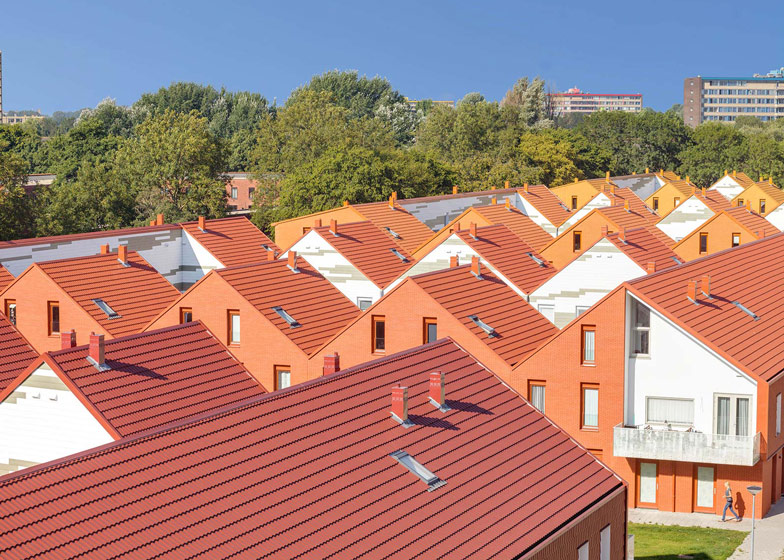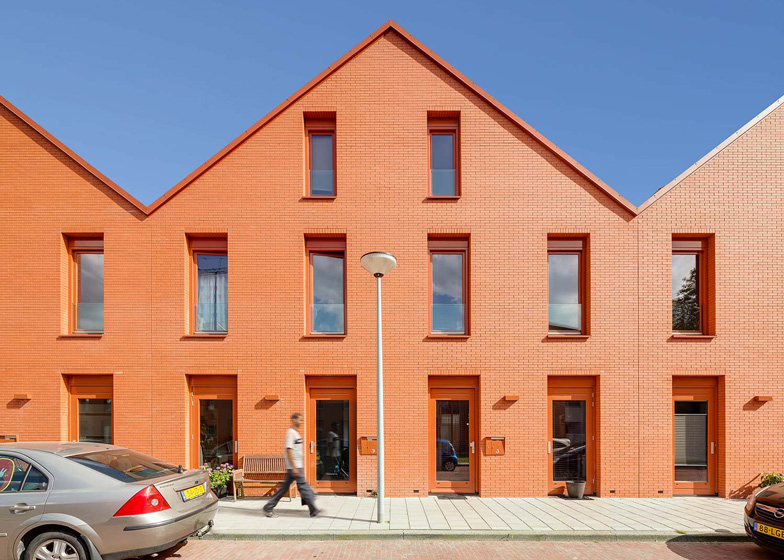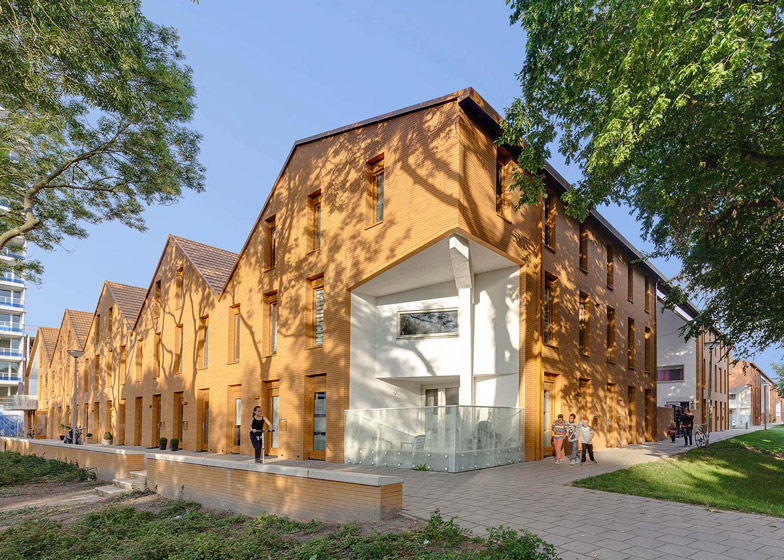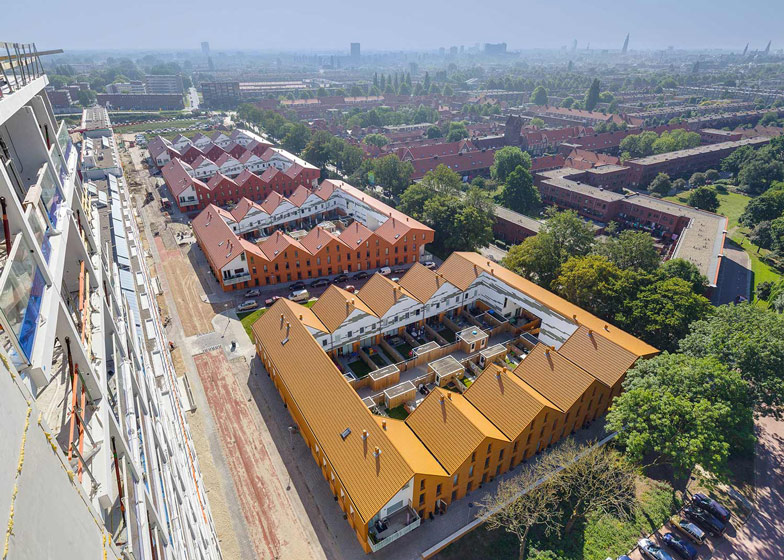Gabled houses in vivid shades of red, orange and yellow line the streets of this new residential district in Groningen, the Netherlands, by Dutch studio architecten|en|en (+ slideshow).
The project was initiated as part of a masterplan by Dutch firm MVRDV to propose housing for 35 different sites within the city limits. Eindhoven studios architecten|en|en and diederendirrix teamed up to plan one of the sites, which is located on a former sports field.
While diederendirrix designed an apartment building for the northern boundary of the site, architecten|en|en planned a series of four urban blocks, each comprising approximately 25 row houses.
"Now the site acts as a new garden village, within the boundaries of the city," architect Frans Benjamins told Dezeen.
Each three-storey block is finished in a different colour, which covers everything from the brick walls and steel roof tiles, to eaves, doors, window frames and letterboxes.
Gardens are contained at the centre of all four blocks, comprising a mixture of private and communal spaces.
"The original idea behind the courtyards was to create community areas, but because the houses are a mixture of sale and rent, we chose for the safe route - private gardens with semi-public courts between," added Benjamins.
A standard two-bedroom house type was designed for the long edges of the blocks, while larger family units fill the gaps along the sides.
Photographs are by BASE Photography.
Here's a project description from the architects:
Court Housing
The celebration of the Dutch Housing tradition.
On a former sports field within the ring road of the Dutch town of Groningen, a new residential district is being realised by creating a 'scenery landscape'. This plan achieves the coherence and transition between the 'garden village' De Oude Hoogte and the industrial area on the northern side of the ring road. The division into sequential living atmospheres provides a varied range of housing typologies.
The northern boundary of the plan is formed by a long apartment building - designed by diederendirrix architects- that functions as a noise barrier towards the area behind it. Here, in the southern part of the plan, a connection to the existing garden village has been realised by the continuation of the road structure and the layout of the scheme in closed perimeter blocks. These blocks contain both the scale and characteristic design of the sloping roofs of the neighbouring buildings.
The housing blocks are designed in different configurations which create a variety of perspective spaces between them. The layout of the housing blocks consist of a combination of standard row houses on the long sides and specials on the short sides. Within these special dwelling types the entrances towards the streets and the inner courtyards are elaborated as white voids, based on the design of the nearby historic gateway named Cortinghpoort.
The inner areas contain a typical Dutch layout of private gardens with storages that are situated on a collective exit. The extra-large meandering design however provides an abundance of space resulting in a comfortable inner area.
The materialisation of the building blocks consist of a shell made of glued bricks, repetitive window frames and sloping roofs with steel tiles. By using just one colour for all these materials in each block, an almost artificial image is created. Because of their white colour, the corners and inner areas automatically become the special elements.
Architect: architecten|en|en
Location: Groningen, The Netherlands
Client: De Huismeesters
Project year: 2003 – 2013




